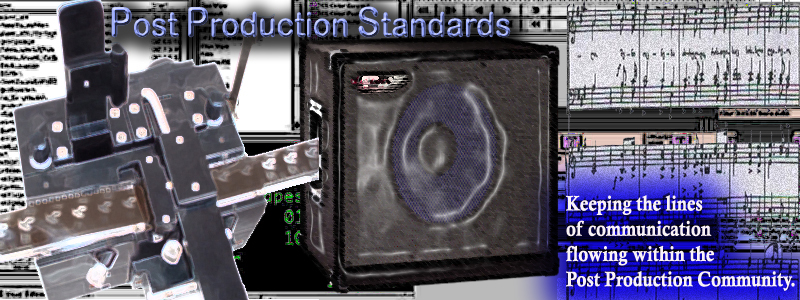The change list tool in the Avid is unmatched by other systems. But because it is, in the end, just a program, it is very important that the picture department makes sure these lists are streamlined and makes sense. The simple truth is that I have heard from numerous sound departments that they get change lists that are unreadable. This should never be the case and can easily be avoided:
1) Know your sequences. And once you have set up your structure for picture and track, be careful not to start moving things around. For example, if you have a green screen in V2 and your background in V1, bring the GS layer down to V1 when making your lists. Just remember to always do this so that you don't get a change list that has you replace your background with your green screen.
2) Make sure the information is correct in the Assemble list boxes. The change list tool has an Assemble List box for both the old and new sequences. Make sure the information in both these areas are the same, and save your settings. For instance, if you check "Show Trans. FX" in the Old List, do so in the New as well.
3) Ignore Color Effects. In the Global settings, make sure you check "Ignore Color Effects." If you do not do this, these pesky effects can show up as changes if you have re-rendered a sequence, even though they are the same clip.
4) Beware of Key Frames. Another thing you want to look at before saving your Change List settings is the Optical area. Make sure you do not have "Key Frames" checked, or you will have trouble making a change list if there is a dissolve on a color effect. Taking this off will save you from some crashes.
5) Take off effects from your sequence. Yes, this is annoying busy work, but quite necessary. Effects on clips, like chroma keys, can get changed themselves without you necessarily change the actual clip. So by going through your sequence before making a list and taking the effects off, you save yourself from having a list that shows unnecessary changes.
6) Reel #. In an earlier post, I listed how the Reel box should be used (especially for doing changes between reels). Just make sure this information is checked in the Old and New areas as well as keeping the reel number consistent in the Reel Heading in your bins.
7) Adding Text. The current Avid Filmscribe gives you the ability to add/change text. Use this to help out the other departments. I will change the headings to make things clear (CL R1 v2 to v3 12/12/07 Picture) as well as bold changes that a editorial department should pay special attention to (like a VFX that causes a sync change internally). And please, put in the new LFOP of your reel in the heading of your Lists (Assemble and Change Lists).
8) Double check the list. Before you send the list out, you need to go through and double check your work. When you look at it, does it make sense? Are there changes present that should not be there?
The big thing is that you keep organized, plan ahead and double check what you send out. Picture Editorial is the gate to the other departments, and it is important that your turnover work is easy to follow and does not contain errors. You would want the same from them, right?

2 comments:
One note for #6:
In sound post, we often see 'garbage notes' FilmScribe makes when there is an entry in the Reel# field for at one of the two sequences being compared.
A simple 10-event change will produce a multipage, complicated change list with lots of 'moves', etc. It seems the Avid THINKS the change list should be a rebalance, when in fact, it is not, and this is what happens.
So, we usually find it makes life MUCH easier if we ask picture assitants to CLEAR OUT the Reel# field for sequences before making non-rebalance change lists.
Do you concur?
Phil
I do think that removing the reel option when not doing rebalance notes is a good idea. However, the reason you are getting garbage notes is because of how the sequences are put together, not this option.
For instance, with academy leaders, it is very important to have separate ones for each reel. And it is important to make sure you put the leaders in the right reels (if you put reel 4 leader on the new reel 3 and then do a change note, you would get a bogus change at the head).
That is the big thing...that picture assistants keep things organized within their sequences. If not, they will get "garbage notes."
Post a Comment